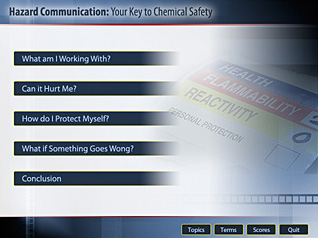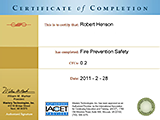Hazard Communication: Your Key to Chemical Safety (HD)
- Product ID
- clmihccs
- Training Time ?
- 52 to 104 minutes
- Language(s)
- English,Spanish
- Video Format
- High Definition
- Required Plugins
- MasteryNet Player
- Lesson Interactions
- 17
- Quiz Questions
- 19
- Closed Captioning
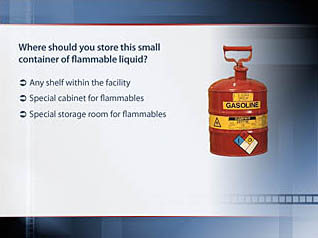
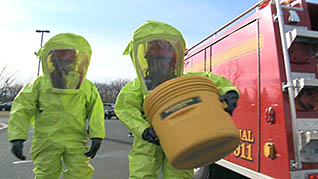
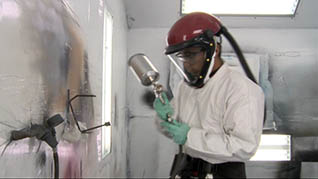
Online Hazcom Training
This hazcom training course covers new information on the new Global Harmonization system. It gives workers practical information about using chemicals by focusing on four questions: What am I working with? Can it hurt me? How do I protect myself? And what do I do if something goes wrong? This hazcom training course thoroughly covers the topics of labels, MSDS's, hazard categories, and safe work practices when working with hazardous chemicals. This hazcom training also discusses what to do if you encounter a spill and how to respond in an emergency situation.
![]() This course is in the Advantage™ format, to read about Advantage™ features click here.
This course is in the Advantage™ format, to read about Advantage™ features click here.
- Rich multimedia presentation with interactions and quiz
- Print certificate and wallet card
- You have 30 days to complete the course
- CEUs awarded
Hazcom training is required for all workers.
-
What am I Working With?
- Global Harmonization
- Signal words
- The hazard statement
- Precautionary statements and symbols
- Product identifier
- Manufacturer/supplier contact
- Color-coded labels
- When to label containers
- Material Safety Data Sheets (MSDS)
-
Can it Hurt Me?
- Recognizing chemical hazards
- Flammable material hazards
- Corrosive material hazards
- Toxic material hazards
-
How do I Protect Myself?
- Protection from flammable material hazards
- Protection from corrosive material hazards
- Protection from toxic material hazards
-
What if Something Goes Wrong?
- Responding to small spills
- Responding to large spills
- Your role during an emergency
-
Recognize hazardous materials.
- Define Global Harmonization.
- List standard information found on manufacturer labels.
- Identify signal words found on labels.
- Explain the purpose of an exclamation mark symbol.
- Distinguish color meaning on color-coded labels.
- Differentiate the meaning of numbers within color-coded labels.
- Explain when not using a label is acceptable.
- Describe a Material Safety Data Sheet (MSDS).
-
Avoid chemical hazards.
- List chemical hazard categories.
- Define flammable hazards.
- Choose examples of corrosive materials.
- Differentiate between flammable and corrosive materials.
- Describe the effects of toxic materials.
-
Protect yourself from chemical hazards.
- Describe safe procedures when working with flammables.
- List typical PPE used with corrosives.
- Identify safe use procedures when working with toxins.
-
Follow proper procedures if something goes wrong.
- Describe the best way to clean a small spill of low-hazard material.
- Agree to never attempt a large spill clean-up without proper training and equipment.
- Identify the role of the general worker during an emergency.
© Mastery Technologies, Inc.

